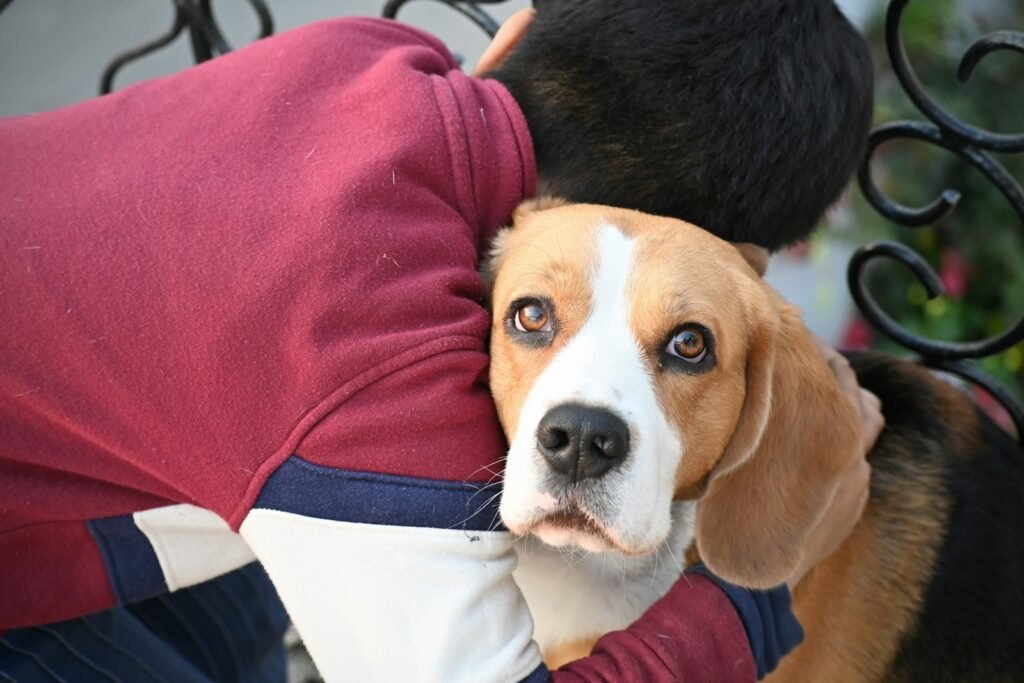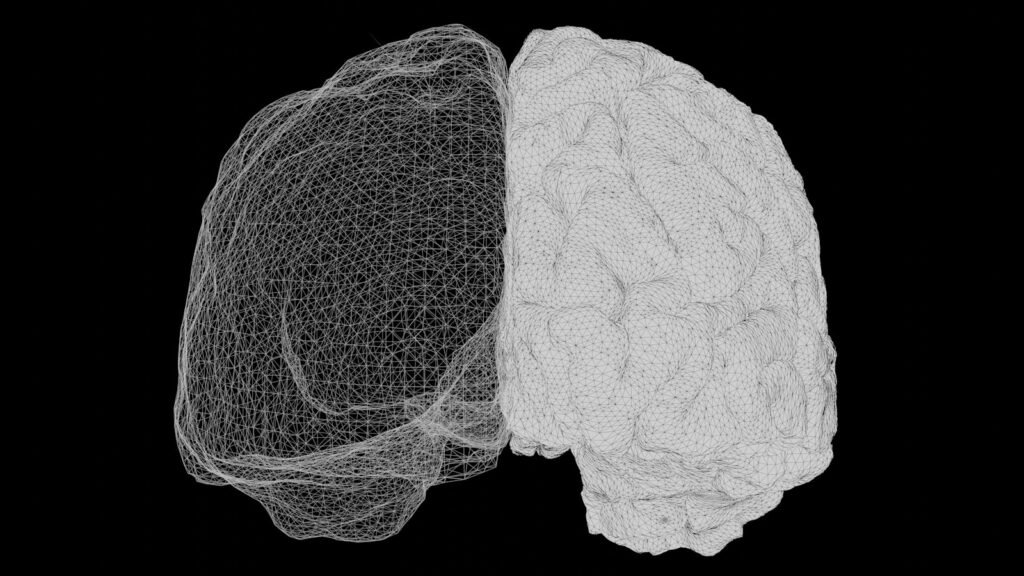Walk into any home where a dog waits by the door and you’ll feel it – the charged silence before a joyful reunion. For years, scientists and pet parents have wrestled with the same question: is this fierce devotion an expression of love or a strategy for survival? New tools from brain imaging to genetics are starting to pry the mystery open, revealing a bond that’s both tender and tactical. What we’re learning is messier, more beautiful, and more practical than a simple either-or. And it just might change how we care for the animals who have chosen us as their family.
The Hidden Clues

Start with the small things that rarely make headlines: the soft eye, the delayed wag, the quiet lean against your leg when you sigh. Dogs are astonishing readers of human micro-movements, and those split-second choices – approach or wait, nuzzle or give space – tell a layered story about trust. Watch a dog on a walk and you’ll see it check back like a hiker scanning a map; that glance is a tiny handshake that says, we’re still together.
Researchers describe a “secure base effect” in many dogs, the same attachment pattern seen in young children who explore more boldly when a trusted figure is near. Tail wag direction, eye contact length, and even sniffing patterns hint at an emotional landscape that’s not simply transactional. Loyalty, in these moments, looks less like a calculation and more like a habit of the heart.
From Campfires to CRISPR: A Deep History

Our story with dogs likely began when wolves lingered at the edges of human camps, trading caution for calories. Over many generations, friendlier animals thrived, and people reciprocated with protection and predictable food – a slow dance of mutual advantage. What started as survival calculus softened into companionship as selection favored animals who were easier to live with.
Modern genetics suggests changes in clusters tied to social behavior, tameness, and stress pathways, providing a molecular backdrop for that easy-going nature. Some scientists even point to overlaps with human syndromes associated with hypersociability, a fascinating clue that friendliness has a biological footprint. It’s evolution with a wag and a warm fire.
What Brain Scans Reveal

Functional MRI studies have spotted reward circuitry lighting up when dogs catch their person’s scent or hear a familiar voice. That glow in regions linked to anticipation and pleasure suggests the relationship carries emotional value beyond mealtime arithmetic. It’s not proof of love as we define it, but it walks awfully close to the edge.
Other imaging work finds sensitivity to certain speech patterns and intonations, meaning praise may land in the brain with more force than we assumed. The dog brain appears tuned to our signals in a way that even closely related canids don’t match. In neural terms, we’ve become their favorite channel.
Hormones and Heartbeats

When dogs and their people share a long gaze or a gentle play session, both show bumps in oxytocin – the hormone often nicknamed the social glue. At the same time, stress markers can ease, hinting at a calming feedback loop that benefits both species. It’s a two-way street where biology reinforces behavior.
There’s also emerging evidence that our physiology can synchronize in subtle ways during quiet rest or training sessions. Not every dog shows the same patterns, and context matters, but the overall picture points to a biochemistry of belonging. Under the skin, the bond hums like a shared chorus.
Wolves, Village Dogs, and the Survival Instinct

To see the survival side, look beyond pets to free-ranging village dogs that orbit human communities worldwide. These dogs are opportunists; they linger near markets and dumps, managing risk while capitalizing on our leftovers. Their social ties to people are thinner, pragmatic, and often fleeting.
Yet even among these dogs, friendlier individuals often fare better, gaining access to safe spaces and human tolerance. Survival has a social price, and cooperativeness pays the bill. The lesson is blunt: practicality forged the pathway, and affection happily moved in.
Reading Us: The Language of Human Signals

Dogs read our pointing, follow our gaze, and notice when our attention drifts – a skill set that develops early and, for many, exceeds that of wolves raised with similar exposure. They seem to learn the rules of our weird primate game: eye contact means connection, stillness can mean concern, and a turned shoulder can signal a pause. That social literacy keeps partnerships smooth and safe.
I’ve seen this in my own home; my anxious rescue relaxed the day I learned to blink softly and yawn when she stiffened at new noises. She learned I was listening, and our feedback loop tightened. Love may be the feeling we name, but understanding is the skill that sustains it.
Why It Matters

Getting the balance right between love and survival instinct isn’t just philosophical – it changes daily decisions. Training methods that lean on fear misread the partnership and often backfire, increasing anxiety and problem behaviors. Approaches built on clear cues, predictable routines, and generous reinforcement tap into the very systems that make dogs want to work with us.
There’s a broader welfare angle, too: recognizing dogs as emotionally capable partners pushes us to provide agency, rest, and choice. When we design homes, parks, or workplaces with canine needs in mind, we honor both the biology and the bond. Science here is not a buzzkill; it’s a compass.
Global Perspectives

Our picture of loyalty is shaped by culture. In some regions, dogs are family members with birthdays and sweaters; in others, they’re community animals that navigate many households without belonging to one. Both worlds reveal how flexible the dog-human contract can be.
Public health campaigns, vaccination drives, and humane management programs show that when communities invest in dogs, both sides thrive. Safer streets, fewer bites, and calmer neighborhoods are the practical dividends. The social fabric strengthens when we treat dogs as participants, not pests.
The Future Landscape

New tech is giving us a clearer window into the canine mind. Wearable sensors track sleep, stress, and activity, while machine learning analyzes bark patterns and posture to flag discomfort earlier. Even noninvasive brain tools are inching toward field use.
Genetic insights may refine breeding for health and temperament, though ethics must lead the conversation to avoid narrowing diversity. Expect better training algorithms, smarter enrichment, and more dog-friendly architecture in cities. The next decade could make canine welfare measurable in ways we only guessed at before.
How You Can Help

Start small: predictable routines, clear cues, and chances to sniff and explore turn daily life into brain food. Learn the basics of canine body language so you can hear the whisper before the bark. If you can, support shelters that prioritize behavioral care, not just intake and output.
Advocate for dog-friendly green spaces and humane community-dog programs where they’re needed. And if you live with a dog, treat enrichment as essential, not optional; curiosity is the muscle that keeps the bond strong. Tiny choices, repeated often, write the story of loyalty at home.
Conclusion

So is a dog’s devotion love or survival? It’s both, braided so tightly that pulling one thread unravels the tapestry. Evolution wrote the first chapters in hunger and safety; affection, attention, and shared routines wrote the rest. When we meet dogs with respect for their minds and bodies, the relationship becomes sturdier, kinder, and more astonishing.
Maybe that’s the miracle: a partnership born in pragmatism that grew into something we gladly call love. Which thread do you see first when your dog looks up at you?

Suhail Ahmed is a passionate digital professional and nature enthusiast with over 8 years of experience in content strategy, SEO, web development, and digital operations. Alongside his freelance journey, Suhail actively contributes to nature and wildlife platforms like Discover Wildlife, where he channels his curiosity for the planet into engaging, educational storytelling.
With a strong background in managing digital ecosystems — from ecommerce stores and WordPress websites to social media and automation — Suhail merges technical precision with creative insight. His content reflects a rare balance: SEO-friendly yet deeply human, data-informed yet emotionally resonant.
Driven by a love for discovery and storytelling, Suhail believes in using digital platforms to amplify causes that matter — especially those protecting Earth’s biodiversity and inspiring sustainable living. Whether he’s managing online projects or crafting wildlife content, his goal remains the same: to inform, inspire, and leave a positive digital footprint.




